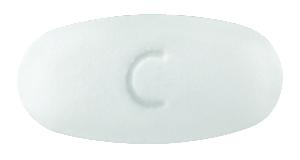Erythromycin Interactions
There are 651 drugs known to interact with erythromycin, along with 5 disease interactions, and 2 alcohol/food interactions. Of the total drug interactions, 203 are major, 390 are moderate, and 58 are minor.
- View all 651 medications that may interact with erythromycin
- View erythromycin alcohol/food interactions (2)
- View erythromycin disease interactions (5)
Most frequently checked interactions
View interaction reports for erythromycin and the medicines listed below.
- Ativan (lorazepam)
- Augmentin (amoxicillin / clavulanate)
- Bactrim (sulfamethoxazole / trimethoprim)
- Benadryl (diphenhydramine)
- Claritin (loratadine)
- CoQ10 (ubiquinone)
- Cymbalta (duloxetine)
- Flonase (fluticasone nasal)
- Lasix (furosemide)
- Lipitor (atorvastatin)
- Lyrica (pregabalin)
- MiraLAX (polyethylene glycol 3350)
- Nexium (esomeprazole)
- Paracetamol (acetaminophen)
- Phenergan (promethazine)
- Prilosec (omeprazole)
- Protonix (pantoprazole)
- Prozac (fluoxetine)
- Reglan (metoclopramide)
- Singulair (montelukast)
- Symbicort (budesonide / formoterol)
- Synthroid (levothyroxine)
- Tylenol (acetaminophen)
- Vitamin B12 (cyanocobalamin)
- Vitamin C (ascorbic acid)
- Vitamin D3 (cholecalciferol)
- Xanax (alprazolam)
- Zofran (ondansetron)
- Zoloft (sertraline)
- Zyrtec (cetirizine)
Erythromycin alcohol/food interactions
There are 2 alcohol/food interactions with erythromycin.
Erythromycin disease interactions
There are 5 disease interactions with erythromycin which include:
More about erythromycin
- erythromycin consumer information
- Compare alternatives
- Pricing & coupons
- Reviews (67)
- Drug images
- Side effects
- Dosage information
- During pregnancy
- Support group
- Drug class: macrolides
- Breastfeeding
- En español
Related treatment guides
Drug Interaction Classification
| Highly clinically significant. Avoid combinations; the risk of the interaction outweighs the benefit. | |
| Moderately clinically significant. Usually avoid combinations; use it only under special circumstances. | |
| Minimally clinically significant. Minimize risk; assess risk and consider an alternative drug, take steps to circumvent the interaction risk and/or institute a monitoring plan. | |
| No interaction information available. |
Further information
Always consult your healthcare provider to ensure the information displayed on this page applies to your personal circumstances.


